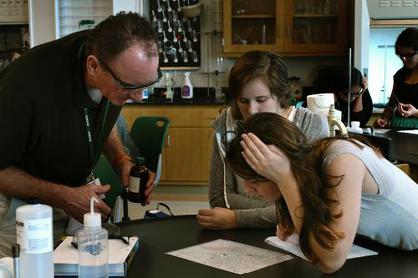Magnet #7 in the Nation: How Were the Rankings Calculated?

Raptors rejoice: AMHS is ranked as the 7th best public high school in the nation according to U.S. News & World Report. Ranked #16 in 2014, our school hit the top 10 before in 2013 and 2008.
But how were the rankings conducted? The complete list includes 19,753 public high schools in the 50 states and D.C. with at least 15 senior students. Rankings were based mostly on the success of economically disadvantaged students in the graduating class of 2013 relative to state averages. The methodology included three steps. Demographic information and test scores were provided by state governments.
1. Better Performance than Statistically Expected
First, the researchers found out which schools were performing better than expected considering their “percentages of economically disadvantaged students” based on math and reading test scores. Schools that qualified for the next step needed to be one-third of one standard deviation above the expected performance for their state. These requirements were lower than in previous years: from 2012 to 2014, scores needed to be one-half of a standard deviation higher.
2. Better Performance for Disadvantaged Students
The next step analyzed whether disadvantaged students’ “math and reading proficiency rates” were better than average for their state. This category included African American, Hispanic, and low-income students.
3. High College Readiness
In the third step, the College Readiness Index (CRI) for each school was calculated “based on the school’s AP [Advanced Placement] or IB [International Baccalaureate] participation rate” among 12th grade students (Class of 2013). The simple participation rate (number of seniors taking exams divided by total number of seniors) was weighted 25% of CRI. The quality-adjusted participation rate, weighted 75%, was the rate of 12th graders who passed at least one exam before or during 12th grade in the 2012-13 school year.
Academic Magnet scored a maximum CRI of 100 and was one of 2.5% of eligible schools to receive a gold medal rating from U.S. News and World Report. The average graduating senior in 2013 took 6.2 AP tests with a total pass rate of 83%. 98% of these students passed at least one exam. However, the CRI for the entire school district is 25.4.
Now that we know how we got these numbers, what do they mean? Is it the school that makes the student successful? Or is it the students who make success themselves? Perhaps it’s a bit of both. Tune in as we consider the implications of these rankings in the near future…

















